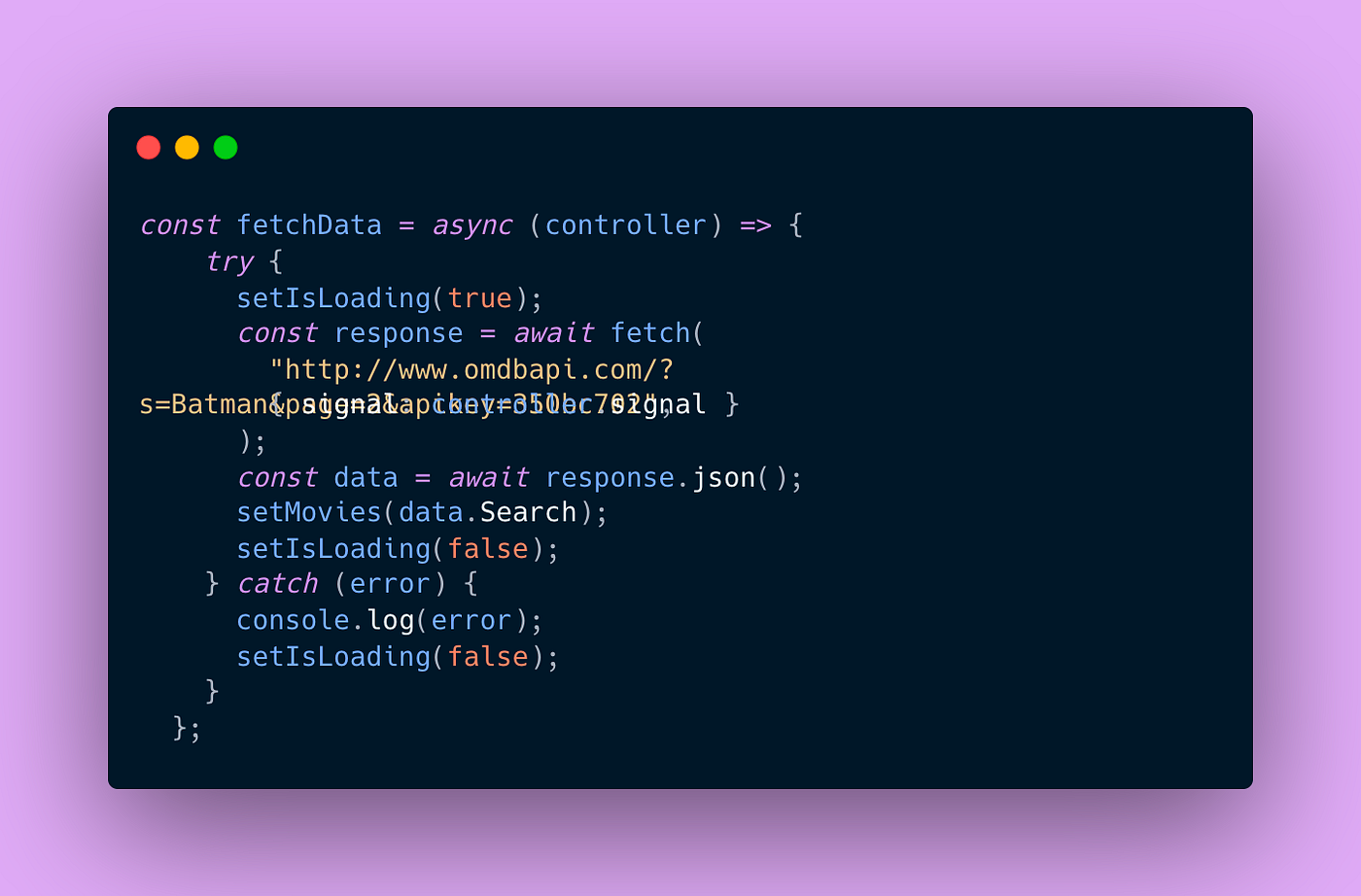In a recent front-end interview, I was given a technical challenge involving several key concepts in React.js:
Conditional rendering
Managing a loading state in a React.js component
Using the map() method to render elements to the UI
Error handling and performance: HTTP request abortion and
clearTimeout()
The Challenge
Fetch an API (JSON file) to display movie details, show a "Loading..." message for 2 seconds before fetching completes, and test it.
Conditional Rendering
Conditional rendering displays components based on certain conditions. For our "Loading..." message, we check the isLoading variable. If true, "Loading..." is displayed; otherwise, the movie list is rendered.
<div>
{isLoading ? (
<p>Loading...</p>
) : (
movies.map((movie) => (
<div key={movie.imdbID}>
<h2>
{movie.Title} - {movie.Year}
</h2>
</div>
))
)}
Ï</div>
Managing a Loading State
Standard JS variables don't re-render React components. We use state variables instead. The isLoading state shows a "Loading..." message before displaying movie data.
Our fetchData() function handles fetching and aborting the request if needed. Initially, isLoading is set to false. When fetchData() is called, it sets isLoading to true and fetches data. Once data is fetched, isLoading is set back to false.

Rendering with map()
The map() method iterates over data and renders each item. It returns a new array of elements, which React then renders. Each element needs a unique key for performance and rendering optimization.
movies.map((movie) => (
<div key={movie.imdbID}>
<h2>
{movie.Title} - {movie.Year}
</h2>
</div>
))
Error Handling and Performance
We use AbortController to manage HTTP request abortion and clearTimeout() to abort fetch requests. The fetchData() function takes a controller as a parameter. If needed, the fetch request can be aborted using controller.signal.
Errors are handled with a try...catch block. Any fetching errors are caught, logged, and isLoading is set to false.

Conclusion
This exercise covered essential React.js concepts like testing, performance, and system design.
Also, the importance of effective state management and error handling in building robust applications.
Hope it helps ✌️
